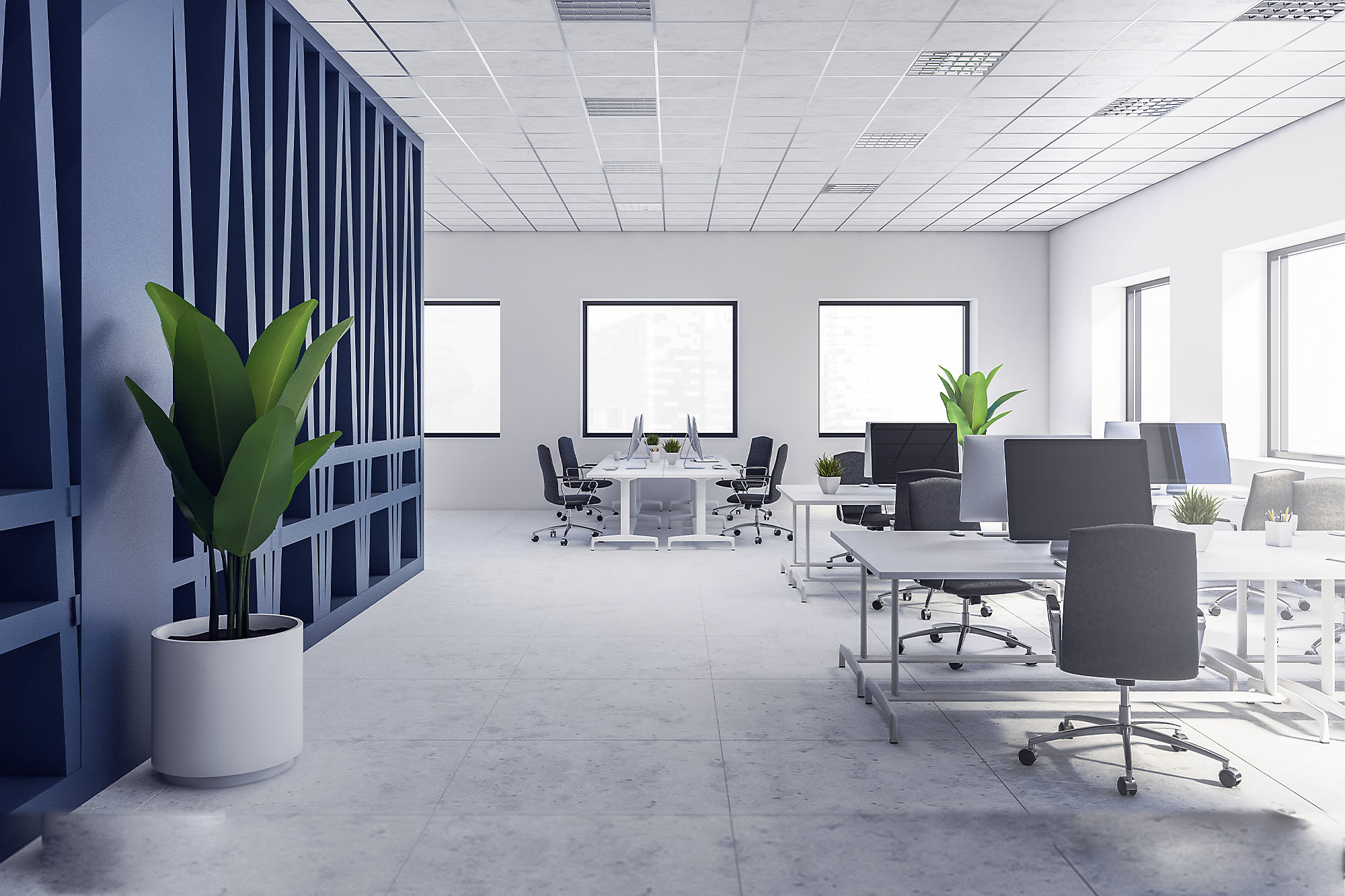
Efficient configuration
Four steps to your perfect office design
Would you like to give your office space a new look? Do the furnishings in some rooms look thrown together, and no efficient room concept can be identified? Or are you in the process of redesigning an entire office?
Then it’s the perfect time to start thinking about what office equipment is right for you. A well-configured office can be profitable for your business:
- A pleasant environment at the workplace has a positive effect on performance.
- The ideal equipment helps employees get organised better and to optimise workflows.
- If you’re factoring in ergonomic guidelines, you will benefit from a lucrative return on investment.
- Well-organised and tastefully furnished offices make a positive impression on business partners and clients.
To benefit from these advantages, you’ll need to invest some time in planning your office furnishings. This article helps you with this by sharing valuable tips on legal regulations in relation to office furnishings and practical advice for basic equipment, choice of colour schemes and the decoration of your business.
1. Preparation: fundamental office configuration
Efficient configuration: to furnish your office optimally, it is best to start with the general infrastructure and only then turn your attention to the details, such as the furniture and the interior design. The following tips will help you plan your office equipment efficiently:
Allocation of space
The first step should involve obtaining an overview of the available space. When allocating the space, you will need to determine which functional areas (e.g. reception, kitchenette or meeting room) your company will need, and where they should be located. Factor the planned number of workstations and legal regulations into your plans.
Room concept
Now determine the respective structure for each room. Should the work area be an open-plan one or should individual areas be separated by room dividers? Should the office kitchenette be divided up into a dining and kitchen area? Where does the space have to be left free for escape routes?
Technical infrastructure
More and more work processes proceed digitally – this is a development that will become more pronounced in future. The IT infrastructure at your business therefore has key importance and should be factored into your plans right from the beginning. Where should cables be laid? Where should routers or Wi-Fi rrouters be installed?
2. Basic configuration: the optimal furnishings for every room
The furnishings should reflect the function of the respective space and support the intended purpose. You will find an overview of the ideal use for the various office spaces, along with a number of suggestions for suitable items of furniture, below.
Reception area
The entrance is the first area that your customers and business partners see. This makes it important to place particular emphasis on an inviting atmosphere here. Plants make the room look more lively, comfortable seating for the waiting area creates an appealing atmosphere.
Office kitchen
The furnishings in your kitchen should be easy to clean. Equip the office kitchen with the necessary electrical appliances for making coffee and for refrigerating and heating food. If the kitchen and break room are a combined space, you’ll need suitable tables and seating as well.
Meeting rooms
The meeting room is all about communication and productivity. Equip your meeting rooms with conference tables, plenty of chairs, and presentation materials.
Office spaces
In this workspace, efficient work and the well-being of your employees take priority. The basic office equipment includes desks, ergonomic office chairs, filing systems and cabinets for work documents, as well as additional equipment for ergonomic work at the computer, such as lamps or laptop supports.
Break room
This room should give employees the opportunity to relax and retreat. Create a peaceful atmosphere with comfortable seating, and a matching colour scheme and decorations.
3. Colour scheme: choose wisely
Colours affect our psyche in specific ways: they can stimulate, calm and promote concentration. This is the reason why the colour scheme in the office plays an important role.
Room size
The colours green, mint, turquoise, blue, yellow, cream, when used on walls, have a room-enlarging effect, while black, shades of grey, taupe and dark shades generally make a room look smaller.
Atmosphere
Warm colours such as yellow, cream, ochre, orange, peach or brown have a stimulating effect, while cool colours such as green, mint, jade, turquoise, blue, sky blue, royal blue or white have a calming effect and can boost concentration.
Intense colours
Highly dominant colours such as red or bright green are more suitable for adding accents rather than for painting large surfaces. The more intense the colour, the smaller the area on which it is used should be.
White walls
White as the dominant colour can quickly make rooms look sterile. Combine white with other colours for an enlivening effect.
4. Decoration: just the right amount
The following applies to decorations in your office: less is more. Too much decoration can make a chaotic impression and impair concentration. Choose your office decorations prudently, and find a consistent style that harmonises with the rest of the furnishings. In rooms where productive work has priority (meeting rooms or offices) in particular, the decorations should not create a distraction.
Plants are a popular accessory which provide a subtle way of enlivening a room. However, beware of high levels of humidity in the office: too many plants increase the moisture in the air.
At their own desks, employees are welcome to put out small picture frames and personal items – this makes the room more vibrant and helps your employees feel more comfortable at work.

Contact us!
We are available to answer any questions, free of charge.


